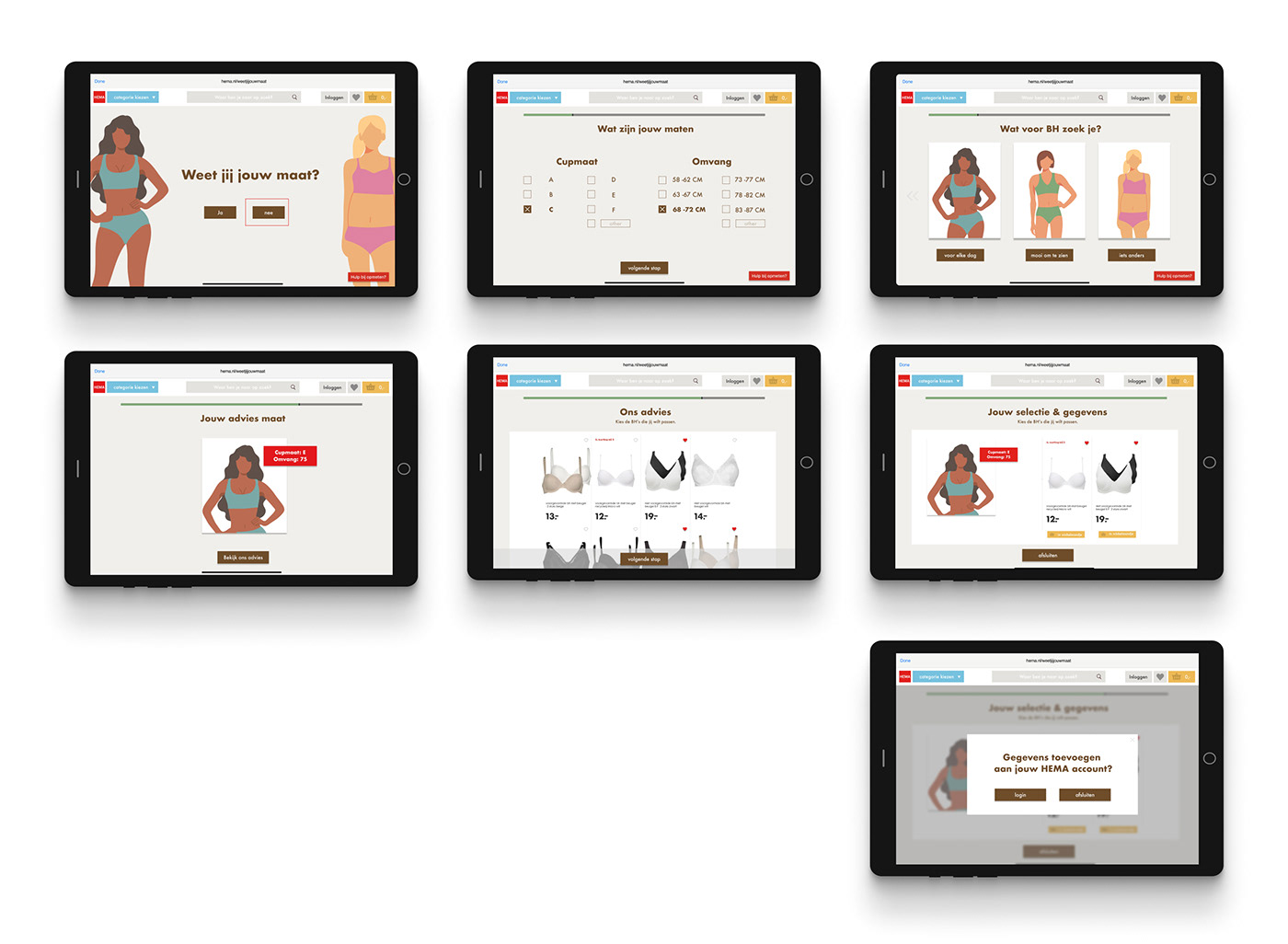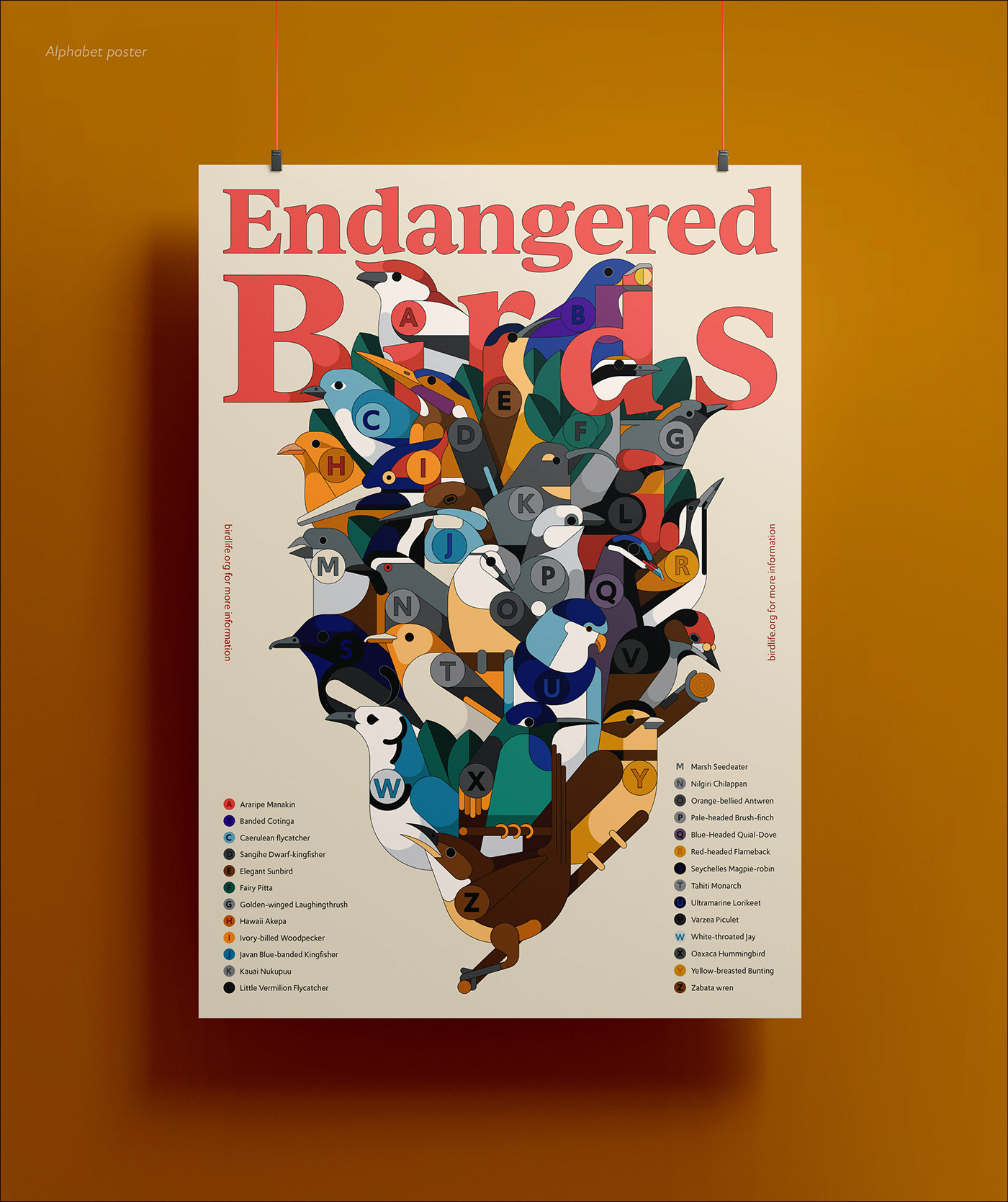
HEMA - Weet jij jouw maat?
HEMA stands for everyday, accessible and approachable. This means that every customer must be given the help they need. So also when buying the right lingerie. By helping women in a friendly and open way, this is fully in line with their mission and vision. The average Dutch woman will appreciate this extra service. In other words: HEMA will do well to approach this intimate, sometimes difficult subject in a simple and accessible way and to offer the help the customer is (unconsciously) looking for.
*text and research is done originally in dutch and based on dutch statistics.
*this project was made as a assessment case for forty
Briefing
HEMA's innovation lab sees an opportunity to better help customers in the store. Customers are neglecting lingerie and the lab wants to change that. Together with the target group, the lab wants to develop a solution that will better enable employees to help customers choose suitable lingerie.
Why?
1. Customers currently ignore lingerie because they do not know what suits them.
1. Customers currently ignore lingerie because they do not know what suits them.
2. Employees lack the knowledge and experience to advise customers properly on this subject.
3. Lingerie is an intimate subject on which one does not easily ask for advice.
4. There are opportunities to inspire customers more about the various lingerie options.
5. Solving this challenge increases brand loyalty of customers.
4. There are opportunities to inspire customers more about the various lingerie options.
5. Solving this challenge increases brand loyalty of customers.
6. This challenge offers upsell opportunities.
Challenge
" How can HEMA (and can HEMA employees) advise customers about buying lingerie, so that they are confident in the choice they make and less lingerie is returned? "
" How can HEMA (and can HEMA employees) advise customers about buying lingerie, so that they are confident in the choice they make and less lingerie is returned? "
Goals
- To develop a solution that allows employees able to help customers choose appropriate lingerie.
- To develop a solution that allows employees able to help customers choose appropriate lingerie.
Deliverables
- Describe the steps you would take to address the problem-research.
- Describe the steps you would take to address the problem-research.
- Devise a possible solution (with a digital component) to the above challenge.
- Present your solution as a concept, use elements of the recognizable HEMA style to reinforce your concept.
- Explain how the concept works using a storyboard or customer journey and a few
- Present your solution as a concept, use elements of the recognizable HEMA style to reinforce your concept.
- Explain how the concept works using a storyboard or customer journey and a few
wire-framed screens a few screens in the form of wireframes.
- Describe an appropriate experiment to validate the solution with the target group.
- Describe an appropriate experiment to validate the solution with the target group.
Service/UX design assessment forty, April 2021
Research
For this project there was limited information available. I was asked to set up a quick research plan for the project. At step four I talk about various interview questions, for the concept I did speak with some woman about their shopping experience regrading lingerie. Based on their information I created my concept.
To start of the project i would start with requesting missing information regarding the company for example:
1. Who is the target audience of Hema lingerie department, what age are these women?
2. What bra is currently sold the most?
3. How does Hema want to position itself in the lingerie market? (Are you going to position yourself as a premierum bra brand like Hunkemöller and Victoria secret?)
Step 1: General research
Conduct a brief desk research study on women's shopping habits regarding buying underwear/lingerie. For example: on average, how often do women buy a new lingerie set?
Conduct a brief desk research study on women's shopping habits regarding buying underwear/lingerie. For example: on average, how often do women buy a new lingerie set?
Step 2: Benchmark research
How do other big lingerie brands do this? For example, look at the size guide of the Hunkemöller or Victoria secret (see website Hunkemöller: advice in 3 steps) is very clear and simple but not necessarily an experience.
How do other big lingerie brands do this? For example, look at the size guide of the Hunkemöller or Victoria secret (see website Hunkemöller: advice in 3 steps) is very clear and simple but not necessarily an experience.
Step 3: Current website (customer journey)
Review how Hema currently sells lingerie online and advises their customers on the different fits, styles, etc.
Review how Hema currently sells lingerie online and advises their customers on the different fits, styles, etc.
Step 4: Interviews
Interviewing the target group (women) by means of a short general questionnaire (quantitative). Then further discussion by means of in-depth interviews. To reach this specific target group I would go to the HEMA flagship store and interview people, this way you can directly discover what problems the target-group is experiencing real-time.
Interviewing the target group (women) by means of a short general questionnaire (quantitative). Then further discussion by means of in-depth interviews. To reach this specific target group I would go to the HEMA flagship store and interview people, this way you can directly discover what problems the target-group is experiencing real-time.
Interview questions:
1. Are you aware of your bra size?
2. Where do you currently buy bras?
3. Are you aware of the wide range of Hema lingerie?
4. How do you generally experience purchasing lingerie?
5. What do you run into while buying lingerie?
6. What do you pay attention to when you are shopping for bras?
1. Are you aware of your bra size?
2. Where do you currently buy bras?
3. Are you aware of the wide range of Hema lingerie?
4. How do you generally experience purchasing lingerie?
5. What do you run into while buying lingerie?
6. What do you pay attention to when you are shopping for bras?
Conclusion interview research
1. Many women don't know their own size (majority of women walk in the wrong bra size)
2. It is an intimate subject and you don't want to think about it too much.
3. Fitting is uncomfortable for many women because, for example at Hunkemöller's, they have to look and feel whether something fits properly; women do not like this.
4. At Hema there is currently no personal assistance when it comes to buying a bra. At 5. Hunkemöller, for example, an expert is present to facilitate this. This also creates trust in the brand.
6. The taboo of buying lingerie must be removed, the threshold must be lowered, precisely because HEMA is an accessible, everyday and therefore personal brand.
7. There is so much variety in women's bodies and this is not represented at present.
2. It is an intimate subject and you don't want to think about it too much.
3. Fitting is uncomfortable for many women because, for example at Hunkemöller's, they have to look and feel whether something fits properly; women do not like this.
4. At Hema there is currently no personal assistance when it comes to buying a bra. At 5. Hunkemöller, for example, an expert is present to facilitate this. This also creates trust in the brand.
6. The taboo of buying lingerie must be removed, the threshold must be lowered, precisely because HEMA is an accessible, everyday and therefore personal brand.
7. There is so much variety in women's bodies and this is not represented at present.
Step 4: Concept development
* see below
Step 5: Testing/Validation
Announcement
Make the concept known there are various ways I would use. To start through the Hema newsletter and clearly indicate it on the website. Hema often has posters in their stores, this concept could also be displayed on these.
During the introduction campaign, it is important to use the knowledge that 70% of women wear the wrong bra size. This creates a need for the target group to make use of the tool.
Physical
With or without a booth in the store and ask the customers if they want to try out the concept and ask them to try it on immediately in order to validate that the tool actually works. In this way it can be concluded whether the tool actually works and immediately see and ask if the customer is satisfied and how they experienced the experience.
Step 6: Iterations&final design
Step 6: Iterations&final design
Concept
Weet jij jouw maat? is a digital tool and experience e to help the staff of Hema and woman shopping there to find their perfect bra size. There are two flows available in this tool. The first flow is for users that don't know their bra size and need help. The second flow is for user that do know their size but need advice finding the right bra.
The tool contains some questions in order to come to an advice. For example: What kind of bra are you looking for? What is your bodyshape? What is your girth? What is your cupsize? The customer can of course go through these steps herself, but it is important that the possibility exists (and is known!) that an expert in the store can help. This should therefore be clear during all steps in the tool. Through a button you can ask for help so that the employee knows that she should come and help in the lingerie department.
Visuals
The step-by-step plan will be mainly illustrative and as little text as possible. By using illustrations you make the tool more accessible (it is an indentifaction with the illustration but not too literal which could also trigger body insecurity). This ensures that the tool is understood faster and users are less likely to drop out. The tool ends with "your recommended size".
As mentioned before the average (Dutch) woman does not know her bra/lingerie size. This problem can be tackled at the time of purchase. Through this interactive experience in the store women can find their exact size. This way no disappointments will arise at home and less returns will be made.
WIRE FRAMES
Link: https://whimsical.com/hema-weet-jij-jouw-maat-DDyfDk6kDZfyUqcr43fWDM


Flow: Size calculator (size unknown to user)


Flow: Size calculator (size known to user)

Flow: Help request (instructions)
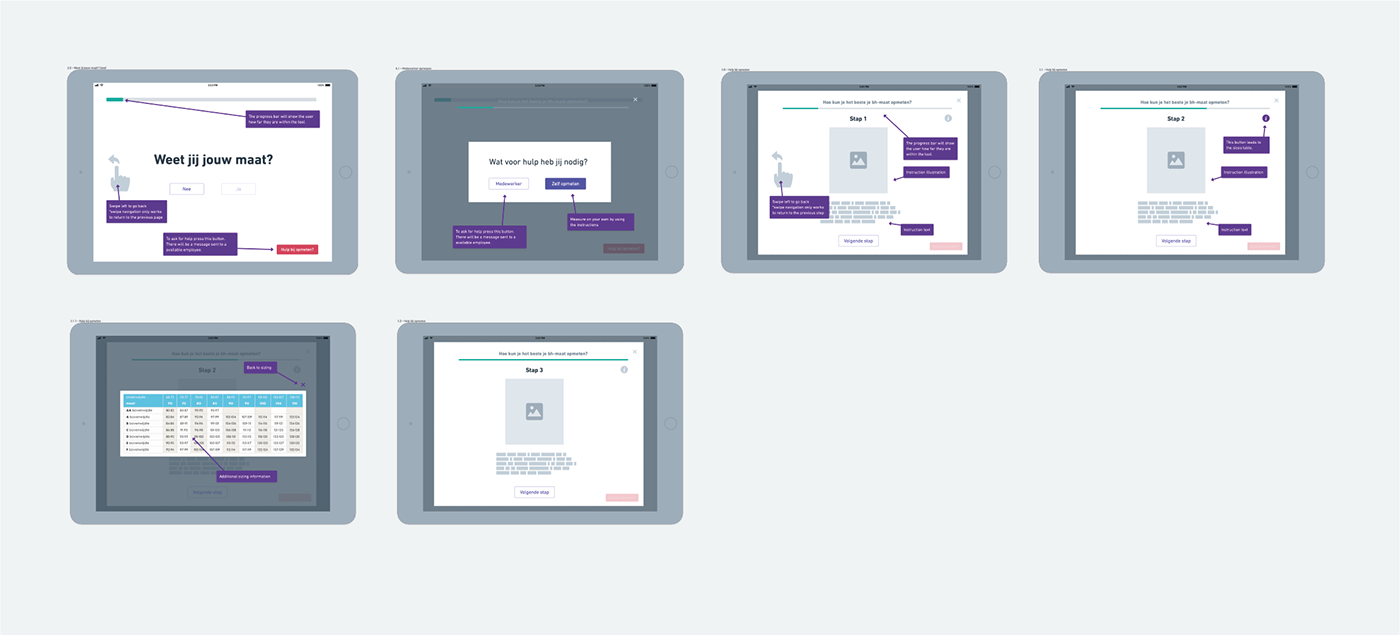
Hi-Fi prototype visuals
Below are the visuals for the Hi-Fi prototype. The design is based on the main style guide of HEMA.
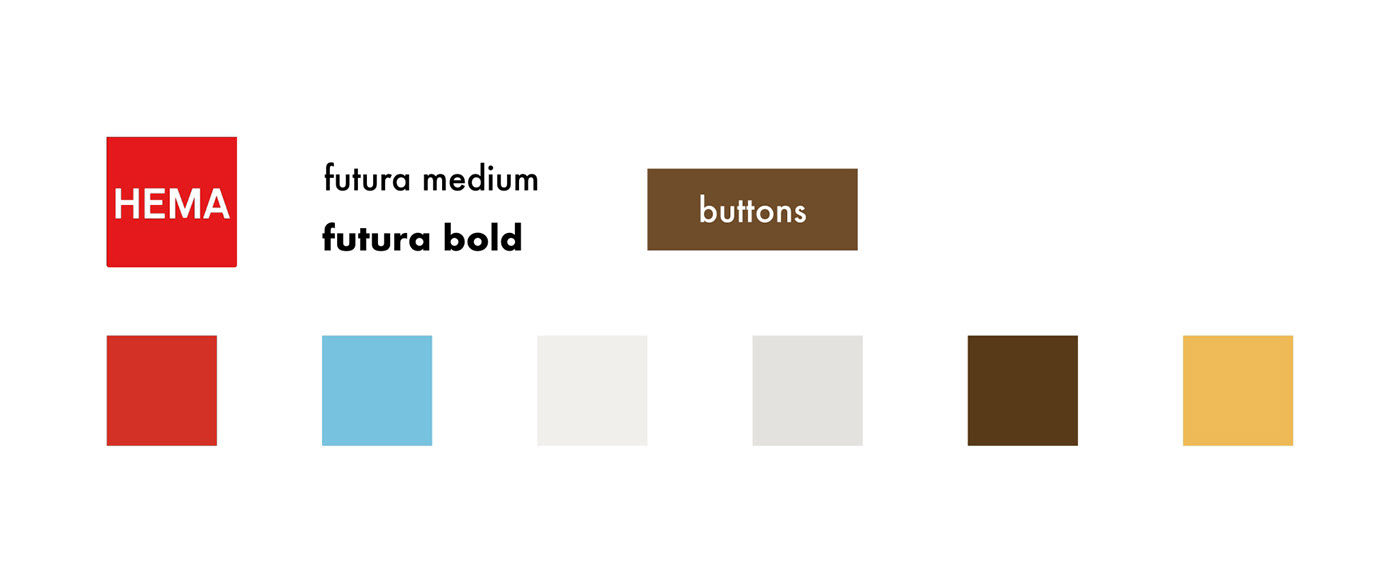
Main flow (size unknown to user)
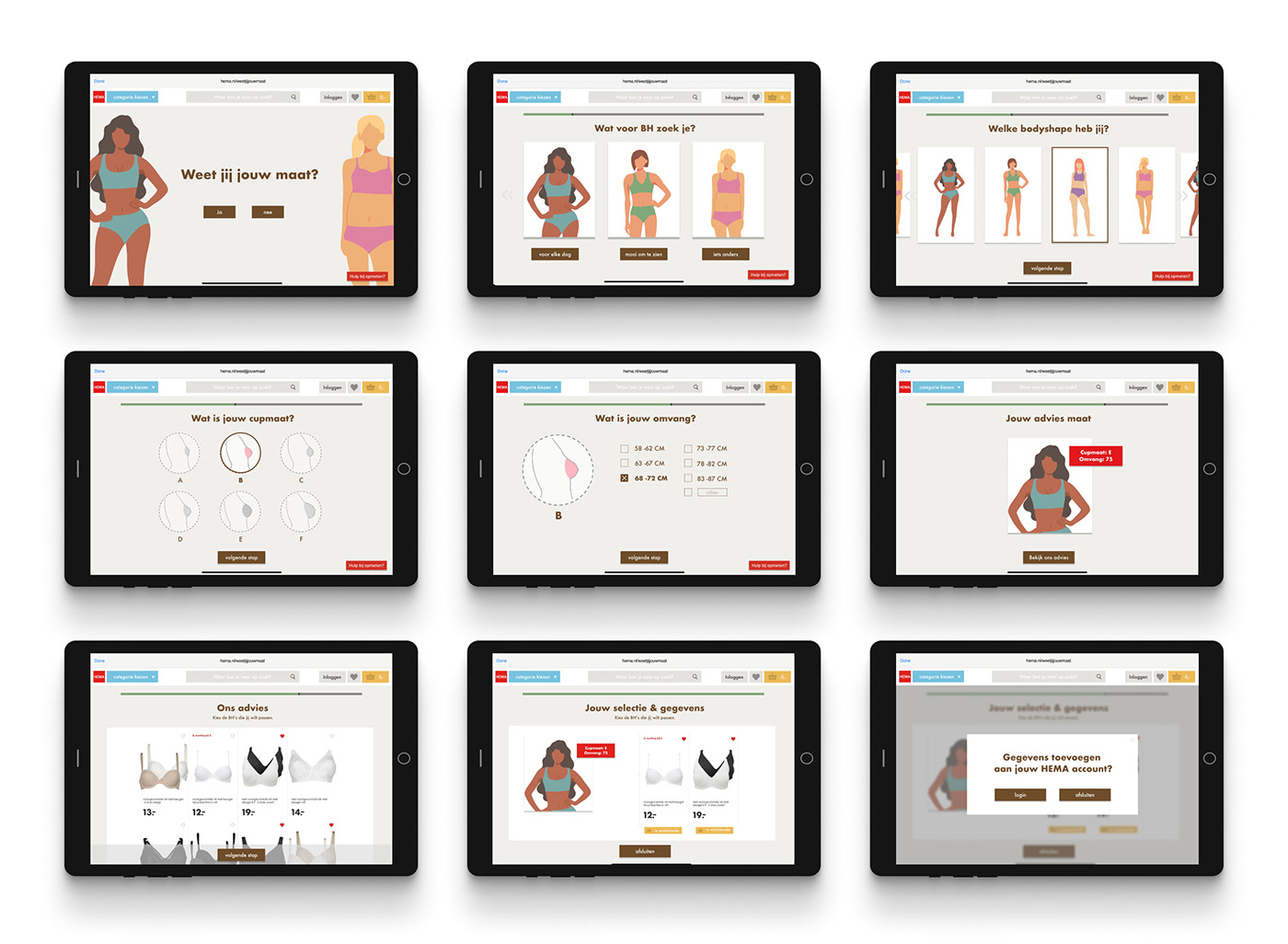
Flow: Help request (instructions)
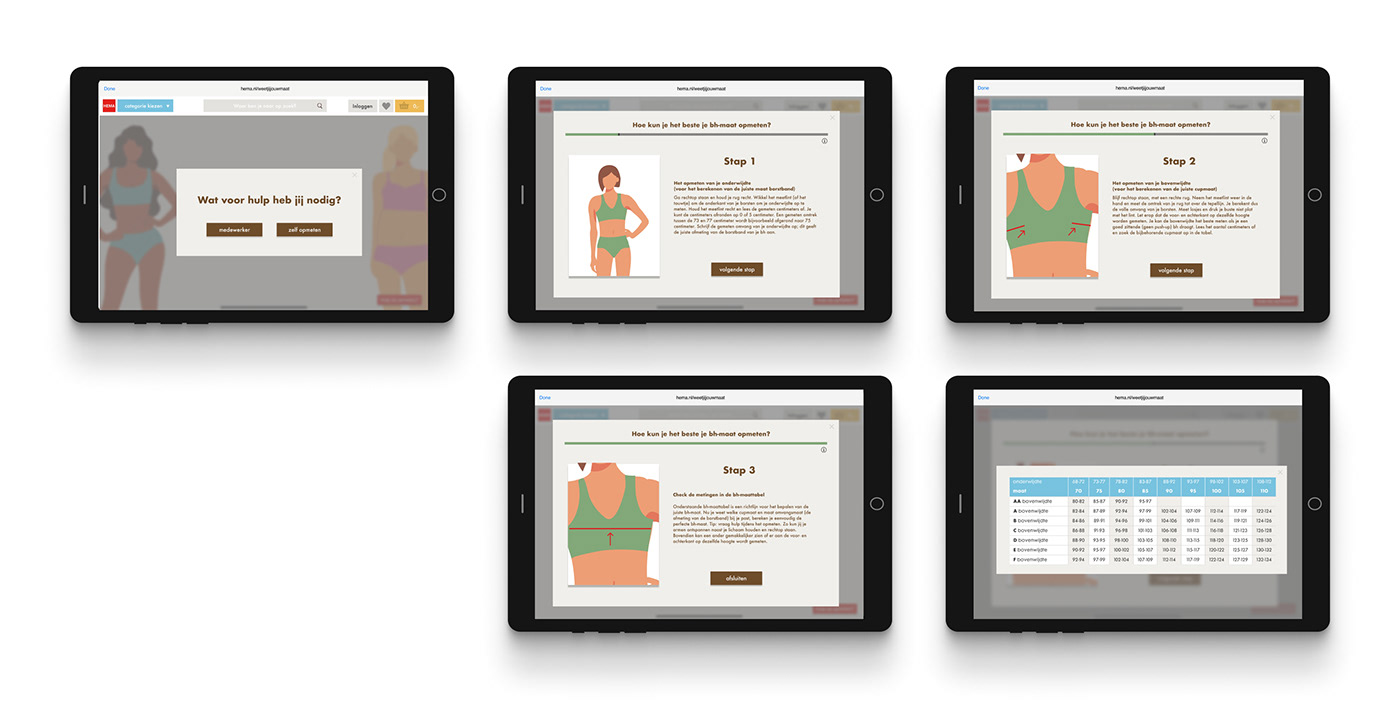
Secondary flow (size known to user)
